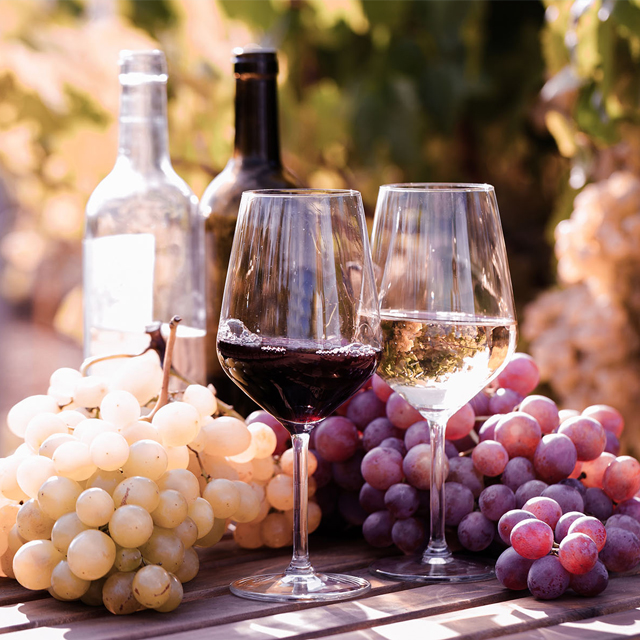United States
The United States has been producing wine for over 300 years and is the world’s fourth largest wine producing country after France, Italy, and Spain. All 50 states produce wine, with California putting out close to 90% of all US wine and accounting for 75% of all US wine sales. New York, Washington, Oregon, Texas, and Virginia are also known as popular wine-producing states.
The first European settlers to arrive in the North America nicknamed it “Vinland” because of the copious amount of grape vines they found. Bringing with them winemaking knowledge and experience, these early settlers made wine using the indigenous vines of the region. They soon realized that wine made from local grapes had unfamiliar flavors and the style and quality wasn’t appealing to them. The exportation of European vines to North America was the next step in trying to produce quality wine, and in 1619 the Virginia Company exported French vinifera vines to Virginia. The first attempts at cultivating these vines were unsuccessful, as native pests and fungal disease proved to be major challenges. Over the years, US winemakers created hybrids vines using vine breeding and grafting techniques. The idea was to cross native disease-resistant vines with the imported European vines. Today, almost all wine-producing vines in the US are either hybrids or European vines that have been grafted onto native varieties.
Spanish missionaries established the first vineyard and winery in California in 1769. Because the grapes native to California made poor quality wine, the missionaries used the Missionary grape, also known as the Criolla grape, which had originally been brought to South America by Spanish settlers. As the missionaries moved throughout California building more missions, they brought the vines with them, eventually reaching Sonoma in 1805. By the 1830s the first secular vineyard was created in California by the French settler Jean-Louis Vignes. Unsatisfied with the overall quality of wine being produced in the area, he imported European Vitis vinifera grapes to the state. By 1850 he became the largest wine producer in California.
The US wine industry was virtually destroyed by depression, war, and the Prohibition of 1920 to 1933. After World War 2, things began to change and a renewed interest in wine consumption and winemaking slowly took place. With the help of universities offering research, seminars and tutorials, and foreign lenders offering financial assistance, the US winemaking industry was stimulated and winemakers were able to breathe new life into the industry. By the 1970s, when California wines beat out its French rivals in a blind taste test, the United States emerged as one of the world’s top producers of quality wines.
INTERESTING FACTS:
The French Huguenot settlers of Jacksonville, Florida first made wine in the early 1560s from large green Scuppernong grapes.
In 1799 in the state of Kentucky, the first commercial vineyard and winery, known as the “First Vineyard” was established in the United States.
The first commercially successful winery in the US is from Cincinnati, Ohio. In the 1830s Nicholas Longworth made sparkling wine from Catawba grapes. These grapes were a hybrid of native grapes and European varieties.
The average American consumes 1.8 gallons of wine per year, compared to 25 gallons of coffee and 40 gallons of soft drinks.
The most popular grape varietals in the US are Chardonnay, Cabernet, and Merlot.
One out of every ten bottles of table wine opened in America is White Zinfandel.
LEARN MORE:
http://www.americanwineryguide.com/
http://content.time.com/time/interactive/0,31813,1837305,00.html
http://www.ibtimes.com/beyond-napa-best-emerging-wine-regions-america-780089
http://recipes.howstuffworks.com/food-facts/guide-to-american-wines.htm
http://www.amazon.com/American-Wine-Ultimate-Companion-Wineries/dp/0520273214
